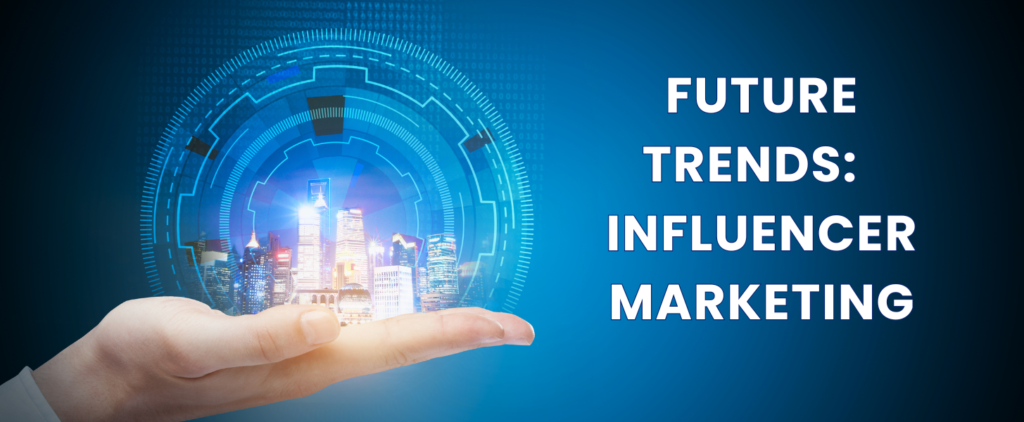The world of marketing is continually evolving, and one of the most significant shifts in recent years has been the rise of influencers. Celebrity influencers have huge global audiences and are great options for brand awareness campaigns, despite their potential high cost. These individuals wield considerable power over their audiences’ perceptions and purchasing decisions, making them valuable assets in modern marketing strategies. This blog explores the evolving role of influencers within the channel ecosystem, contrasts influencer partnerships with traditional partnerships, and examines their impact on both the modern B2B sales ecosystem and the B2B tech sales ecosystem.
Where Do Influencers Fit into the Channel Ecosystem?
Traditional Channel Ecosystem Overview
To understand the role of influencers, it’s essential first to review the traditional channel ecosystem. This ecosystem is a well-oiled machine consisting of manufacturers, distributors, resellers, and end-users. Each component has a distinct function:
- Manufacturers: They are responsible for creating and producing products. Their primary focus is on product development, quality control, and initial marketing efforts.
- Distributors: These entities handle the logistics of getting products from manufacturers to various resellers. They manage inventory, shipping, and sometimes even marketing and promotional activities.
- Resellers: Resellers, which include retailers and wholesalers, purchase products from distributors and sell them to end-users. They are often responsible for final marketing and sales efforts.
- End-Users: The final consumers who use the products. Their feedback and purchasing behavior are critical for the success of the product.
Each player in this ecosystem relies on the others to move products efficiently and effectively to the end-user. Traditional channel strategies have focused on optimizing these relationships to maximize reach and sales.
Introduction of Influencers into the Ecosystem
Influencers add a new dimension to this established ecosystem. They do not fit into traditional roles but rather operate as powerful amplifiers of brand messages. Here’s how influencers integrate into the channel ecosystem:
- Enhancing Brand Visibility: Influencers have substantial followings on platforms such as Instagram, LinkedIn, Twitter, and YouTube. By partnering with influencers and setting up different influencer marketing campaigns, brands can reach a broader and more targeted audience. Influencers help amplify brand messages, bringing products to the attention of potential customers who may not be reached through conventional channels.
- Building Trust and Credibility: Unlike traditional advertising, which can be perceived as self-serving, influencer endorsements are often viewed as more authentic. Influencers build trust with their audiences through consistent and genuine content. Influencer posts can drive consumer purchases and enhance brand visibility. When they endorse a product, it carries the weight of their personal credibility, making it more persuasive than traditional marketing efforts.
Integration with Traditional Channel Partners
The integration of influencers with traditional channel partners can create powerful synergies. Here’s how this collaboration can be achieved:
- Joint Content Creation: Influencers can collaborate with resellers or distributors to create content that highlights the product’s benefits. For example, a tech company might partner with an influencer to produce a series of product demonstration videos that are shared through both the influencer’s and the reseller’s channels. An influencer marketing hub can facilitate this by providing tools and resources for seamless collaboration.
- Co-Hosted Events: Brands can team up with influencers and channel partners to host webinars, live streams, or virtual events. These events can provide valuable content to an engaged audience while leveraging the influencer’s reach and the channel partner’s market expertise.
- Collaborative Promotions: Influencers can help channel partners with promotional campaigns, offering exclusive discounts or giveaways to their followers. This not only drives engagement but also encourages sales through the channel partner’s network.
How Are Influencer Partnerships Different from Traditional Channel and Alliance Partnerships?
Nature of Relationships
Influencer partnerships and traditional channel partnerships differ significantly in their structure and nature:
- Influencer Partnerships: These relationships are often informal and flexible. Influencers are typically engaged for specific campaigns or content creation, and the terms of these collaborations can be adapted to fit evolving trends and audience feedback. The focus is on creating compelling content and engaging with the influencer’s audience.
- Traditional Partnerships: Traditional channel partnerships involve formal agreements and long-term commitments. These partnerships are structured with clearly defined roles, responsibilities, and objectives. They focus on distribution, sales, and operational efficiency. The relationship is often governed by detailed contracts and performance metrics.

Objectives and Metrics in Influencer Marketing Strategy
The goals and metrics for influencer partnerships differ from those of traditional partnerships:
- Influencer Partnerships: The primary objectives are to increase brand awareness, drive engagement, and prompt specific actions (such as clicks or social media interactions). Key performance metrics include:
- Reach: The number of people who see the influencer’s content.
- Engagement Rate: The level of interaction (likes, comments, shares) with the content.
- Content Performance: How well the content performs in terms of driving traffic or conversions.
- Traditional Partnerships: Objectives are centered around sales growth, market expansion, and channel management. Metrics for evaluating success include:
- Sales Volume: The total number of products sold through the channel.
- Distribution Efficiency: The effectiveness of getting products to market and managing inventory.
- Partner Performance: The performance of channel partners in meeting sales targets and adhering to agreements.
Engagement and Influence
The way influence is exerted in influencer partnerships compared to traditional partnerships highlights key differences:
- Influencer Partnerships: Influencers leverage their personal brand and relationship with their audience to drive engagement. Their influence is based on authenticity, trust, and the ability to connect on a personal level. When influencers share or endorse a product, it resonates with their followers because it comes from a trusted source.
- Traditional Partnerships: Influence in traditional partnerships is driven by business relationships and formal agreements. The impact is largely based on operational factors such as product availability, distribution channels, and sales incentives. The relationship is more transactional and less personal compared to influencer partnerships.
Flexibility and Agility
Influencer partnerships often exhibit greater flexibility and agility compared to traditional partnerships:
- Influencer Partnerships: These partnerships can quickly adapt to changing trends, audience feedback, and real-time data. Influencers can modify their content strategy based on performance metrics and emerging trends, allowing for dynamic and responsive marketing efforts.
- Traditional Partnerships: Traditional channel partnerships are generally more rigid, with longer planning cycles and less flexibility. Changes to strategy or tactics often require significant time and effort due to formal agreements and established processes.
The Role of Influencers in the Modern B2B Sales Ecosystem
Building Brand Authority
In the B2B sector, influencers play a crucial role in establishing brand values and enhancing brand authority:
- Thought Leadership: Influencers in the B2B space often share their expertise and insights on industry trends, challenges, and solutions. By positioning themselves as thought leaders, they help build credibility for the brands they work with. For instance, a prominent industry analyst might write a white paper or host a webinar that showcases a company’s products and solutions in the context of broader industry trends. Social media influencers can also establish thought leadership by leveraging their large following to engage with and persuade their audience, thereby enhancing brand authority.
- Industry Validation: Influencers can provide validation for a brand’s offerings, helping to build trust among potential clients. Their endorsement serves as a form of social proof, reinforcing the brand’s reputation and reliability in the market.
Educating and Engaging Decision-Makers
Influencers help educate and engage decision-makers in the B2B space:
- Content Creation: Influencers create valuable content such as educational articles, case studies, and how-to guides that address specific business challenges. This content helps decision-makers understand the value and benefits of the brand’s solutions.
- Interactive Engagement: Through webinars, live Q&A sessions, and industry panels, influencers engage with decision-makers directly. This interaction allows for real-time feedback, discussions, and deeper insights into the brand’s offerings.
Expanding Reach and Visibility
Influencers can extend a brand’s reach and visibility in the B2B sector:
- Targeted Outreach: Influencers often have niche audiences that align with specific industry segments or job roles. By partnering with influencers, brands can tap into these targeted audiences and expand their reach beyond traditional marketing channels.
- Enhanced Visibility: Influencers’ content often reaches a wide and engaged audience. This increased visibility helps brands attract new leads and opportunities, driving growth in their target markets.
Enhancing Customer Experience
Influencers contribute to a better customer experience by:
- Personalized Recommendations: Influencers offer tailored recommendations and insights based on their understanding of their audience’s needs. This personalized approach helps potential clients see how the brand’s solutions can address their specific challenges.
- Building Relationships: The authentic and relatable nature of influencer content helps foster stronger connections between the brand and its audience. This enhanced relationship contributes to a more positive overall customer experience.

The Role of Influencers in the B2B Tech Sales Ecosystem
Product Demonstrations and Reviews
In the B2B tech sector, influencers are instrumental in showcasing products through demonstrations and reviews:
- Live Demonstrations: Tech influencers often conduct live product demonstrations, showcasing the features and benefits of technology solutions in real-time. These demonstrations help potential clients visualize how the product works and understand its practical applications.
- In-Depth Reviews: Influencers provide detailed reviews of tech products, evaluating their performance, usability, and value. These reviews serve as a valuable resource for decision-makers evaluating different technology options.
Thought Leadership and Innovation
Influencers in the tech industry contribute to thought leadership and innovation:
- Industry Insights: Tech influencers share insights on emerging trends, innovations, and technological advancements. Their perspectives help position tech companies as forward-thinking leaders in their field.
- Innovation Promotion: By discussing and endorsing cutting-edge technologies, influencers help drive interest and excitement around new innovations. This can lead to increased adoption and market penetration for tech products. For example, an influencer might highlight the benefits of a new AI-driven tool or software solution, demonstrating its potential to revolutionize industry practices and attract attention from key stakeholders.
Networking and Partnerships
Influencers facilitate valuable networking and partnerships within the tech ecosystem:
- Connecting Stakeholders: Influencers often have extensive networks of industry contacts, including technology professionals, company executives, and industry analysts. They can introduce tech companies to potential partners, clients, or experts, opening doors to new opportunities and collaborations.
- Collaborative Opportunities: Through their network, influencers can help tech companies identify and pursue collaborative opportunities, such as joint ventures, strategic alliances, or co-branded initiatives. These collaborations can lead to shared resources, enhanced market presence, and accelerated growth.
Driving Adoption and Implementation
Influencers play a significant role in social media platform in driving the adoption and implementation of tech solutions:
- Case Studies and Success Stories: Influencers often share success stories and case studies demonstrating how tech solutions have been effectively implemented. These real-world examples provide potential clients with tangible proof of the product’s value and impact, helping to overcome skepticism and drive adoption.
- Practical Guidance: Influencers offer practical guidance on how to implement and use tech solutions effectively. This guidance can include step-by-step instructions, best practices, and tips for overcoming common challenges. By providing actionable insights, influencers help potential clients realize the full benefits of the technology.
Challenges and Solutions in Working with Influencers
While this influencer marketing strategy offers numerous benefits, it also comes with its own set of challenges. Addressing these challenges effectively is crucial for successful influencer partnerships.
Challenge: Ensuring Authenticity
- Issue: Maintaining authenticity can be challenging when working with influencers. Audiences are quick to detect when content feels inauthentic or overly promotional, which can lead to distrust and reduced engagement.
- Solution: To ensure authenticity, brands should select influencers whose values and audience align with their own. Collaborating with influencers who genuinely use and believe in the product can result in more authentic and persuasive content. Additionally, allowing influencers creative freedom to craft their content helps maintain a genuine voice.
Challenge: Measuring ROI
- Issue: Measuring the return on investment (ROI) for influencer marketing can be difficult. Traditional metrics like reach and engagement don’t always translate directly into sales or business growth.
- Solution: To measure ROI effectively, brands should set clear objectives and KPIs (key performance indicators) for their influencer campaigns. These might include metrics such as conversion rates, lead generation, and sales attributed to influencer activities. Using tracking tools and analytics platforms can help provide a clearer picture of the campaign’s impact.
Challenge: Finding the Right Influencers
- Issue: Identifying and partnering with the right influencers can be time-consuming and complex. Choosing influencers who genuinely resonate with the target audience and align with the brand’s values is crucial.
- Solution: Brands should use influencer marketing platforms and tools to streamline the process of finding and vetting influencers. These platforms offer insights into influencers’ audience demographics, engagement rates, and past performance, helping brands make informed decisions. Additionally, conducting thorough research and reviewing influencer content can help ensure a good fit.
Challenge: Managing Expectations
- Issue: Misaligned expectations between brands and influencers can lead to dissatisfaction and suboptimal outcomes. Clear communication and understanding of each party’s goals and responsibilities are essential.
- Solution: Establishing clear guidelines and expectations from the outset can help prevent misunderstandings. Brands should outline campaign objectives, deliverables, timelines, and compensation terms in detail. Regular check-ins and feedback sessions can also help ensure alignment and address any issues promptly.

Future Trends in Influencer Marketing within the Channel Ecosystem
As the influencer marketing industry continues to evolve, several key trends and emerging technologies are shaping its future within the channel ecosystem.
Emerging Technologies
- Artificial Intelligence (AI): AI is transforming influencer marketing by enabling more precise targeting and personalization. AI-driven tools can analyze vast amounts of data to identify the best influencers for specific campaigns, predict content performance, and optimize campaign strategies. For example, AI algorithms can analyze social media data to assess influencer credibility and audience engagement, providing valuable insights for brands.
- Blockchain Technology: Blockchain is enhancing transparency and trust in influencer marketing. It can be used to track and verify influencer activities, ensuring that brands receive accurate reports on campaign performance. Blockchain also helps combat issues like fake followers and fraudulent metrics by providing an immutable record of transactions and interactions.
New Platforms and Channels
- Emerging Social Media Platforms: New social media platforms and channels are continually emerging, offering fresh opportunities for influencer marketing. Brands should stay abreast of trends and explore new platforms where influencers are gaining traction. For example, platforms like TikTok and Clubhouse have quickly become popular for influencer collaborations, offering unique ways to engage with audiences. Influencers on popular social media platforms like Instagram, TikTok, and X (formerly Twitter) have gained prominence, each platform showcasing its own style of content and top influencers.
- Interactive Content Formats: The rise of interactive content formats, such as augmented reality (AR) filters and virtual reality (VR) experiences, presents new possibilities for influencer marketing. Influencers can create immersive and engaging content that enhances the audience experience and drives greater interaction with the brand.
Personalization and Niche Targeting
- Hyper-Personalized Content: The demand for personalized content is growing, and influencers are well-positioned to deliver it. By leveraging data and insights, influencers can create highly targeted content that resonates with specific audience segments. This approach enhances engagement and drives more meaningful interactions with the brand.
- Niche Influencers: The rise of niche influencers, who focus on specific industries or interests, allows brands to target highly specialized audiences. Collaborating with niche influencers can help brands reach more relevant and engaged audiences, leading to more effective marketing outcomes.
Regulatory and Ethical Considerations
- Increased Regulation: As influencer marketing matures, regulatory bodies are introducing new guidelines and regulations. Brands and influencers must stay informed about these regulations and ensure compliance to avoid legal issues. For example, the Federal Trade Commission (FTC) in the U.S. requires clear disclosure of paid partnerships and sponsored content.
- Ethical Practices: Ethical considerations are becoming more prominent in influencer marketing. Brands and influencers should prioritize transparency, authenticity, and responsible practices. This includes disclosing sponsored content, avoiding misleading claims, and promoting products that align with the influencer’s genuine beliefs and values.
Influencers have become a transformative force in channel marketing, offering new opportunities for engagement, visibility, and growth. Their role within the channel ecosystem, while distinct from traditional partnerships, complements and enhances established strategies. Influencers bring unique strengths to the table, including their ability to build trust, create authentic content, and reach targeted audiences.
By integrating influencers into marketing efforts, brands can leverage their credibility, reach, and engagement to drive success in both the B2B and B2B tech sales ecosystems. Embracing this dynamic approach to influencer strategy allows brands to stay competitive in an ever-evolving landscape, harnessing the power of influencers to achieve their marketing goals.
As the influencer marketing landscape continues to evolve, staying abreast of emerging trends and technologies will be crucial for maximizing the impact of your influencer marketing campaign and partnerships. By addressing challenges, adapting to new developments, and maintaining a focus on authenticity and value, brands can successfully navigate the world of influencer marketing and achieve meaningful results.
